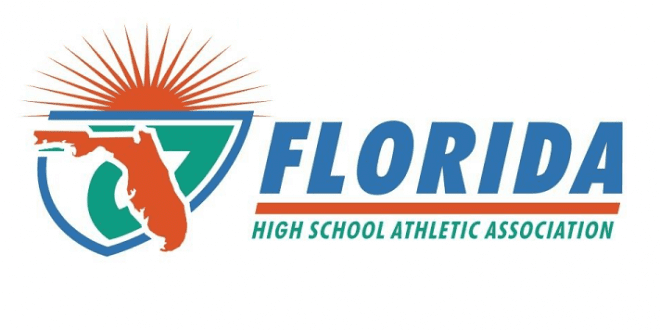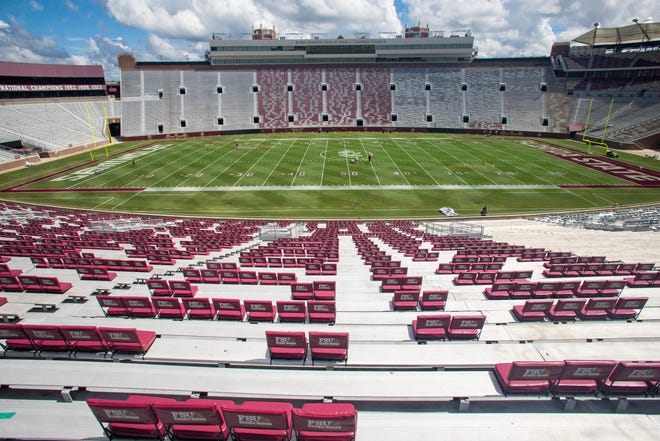Florida adds wrestling, sand volleyball as official girls high school sports
The Daytona Beach News Journal | By Chris Boyle | June 9, 2020
The FHSAA’s board of directors also voted 11-2 in favor of the six-quarter rule for prep football.
Tuesday proved to be a landmark day for female sports in the state of Florida.
The Florida High School Athletic Association’s board of directors voted unanimously to add two new sanctioned sports, girls wrestling and sand volleyball, for the 2021-22 school year.
Rather than begin this coming year, the FHSAA cited the need for districts to budget for coaching supplements, stipends and contracts as reasons for a temporary delay.
John White, former boys wrestling coach at Matanzas High and a longtime advocate for inclusion, called the decision a “great victory” for wrestling and for female athletes.
“The girls have worked hard for many years to get here, and they deserve it,” White said. “I’m excited to finally see in the 2021-22 season that the girls are going to compete at Silver Spurs Arena (in Kissimmee) right alongside the boys.”
Florida becomes the 24th state to sanction girls wrestling as a recognized high school sport. According to the National Federation of State High School Associations, participation in girls wrestling has increased every year since 1990.
In 2018-19, Volusia County high schools reported that 27 athletes — 19 considered varsity — competed in wrestling. Twenty-eight local female wrestlers took part in the unsanctioned 2020 state championship event, held at Orlando’s Dr. Phillips High School.
The bracketed tournament featured weight classes ranging from 100 to 287 pounds.
Seabreeze’s Kayla Nguyen admits there are mixed emotions to the FHSAA’s ruling. A rising senior lightweight who has competed in the state meet and intergender tournaments, Nguyen celebrates the sport’s growth despite not getting the chance to experience the payoff.Compare rates and save at Progressive.comAd By Progressive See More
“We wanted to show we could do it, too,” Nguyen said. “A lot of us have, ‘It’s a man’s sport,’ directed at us, or we’re seen as tomboyish. If someone put their mind to it, they can basically do anything, regardless of stereotypes.”
Wrestling is typically the last winter sport to commence, typically at the end of November and running through the beginning of March. Sand volleyball will take place during the spring season, which lasts from February through May.
Growth within Florida and at the collegiate level prompted the FHSAA to join the Arizona Interscholastic Association as the only state organizations to sanction high school beach volleyball.
“It just opens the door more for our girls,” Taylor volleyball coach Tanya Ramos said. “I’ve got a large group of girls who don’t play travel ball, and don’t play softball, and I’m willing to bet they are going to be thrilled to have an opportunity to play some sand (volleyball) in the spring.”
In 2020, the independent Sunshine State Athletic Conference listed more than 50 high schools in its two classifications of competitive sand volleyball. Four represent the Volusia/Flagler area — DeLand, New Smyrna Beach, Seabreeze and Spruce Creek.
Additionally, the NCAA has 69 member institutions with competitive beach volleyball programs, including Stetson. The Hatters qualified for the 2019 national championships, toppling No. 1 USC in double-elimination action.
Each school would require five pairs for competition, according to the proposal put forth by Jen Darty (Oviedo) and Juanita Hitt (Hagerty) on behalf of the Girls Volleyball Advisory Committee. Schools are encouraged to field rosters of no fewer than 12 girls.
Like tennis, the top pairs for each team would face each other, and so on for pairs Nos. 2-5. The school which wins three, best-of-three matches (21 points for the first two sets, 15 for a tiebreaker if necessary) takes the team dual.
The FHSAA’s board of directors also made a significant decision for the upcoming prep football season, adopting the six-quarter rule which will allow schools to dress players for junior varsity and varsity games in the same week.
An athlete may only compete in a maximum of six quarters per week, though the FHSAA’s Sports Medicine Advisory Committee recommends at least 24 hours of rest in between sub-varsity and varsity competition.
The motion passed with an 11-2 vote.






